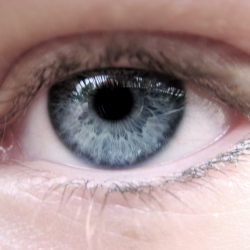
To a computer, your face is a set of points and measurements between your features, but to advertisers, these data sets mean lucrative profits and a new way to connect with customers. Facial detection technology is making it feasible to do real-time measurement and analysis of advertisements in the physical world and predict the products you will want to buy, based on who you are or what you look like.
In a world full of cameras and ubiquitous gadgets, there are serious concerns of how far advertisers will take this. From the advertisements outside, to the televisions in your home – this technology will be coming to a screen near you.
As part of Plan UK’s outreach campaign, advertisements played different messages to men and women
Next time you are looking up at a billboard, there’s a chance it may be looking back down at you.
Immersive Labs has developed software for digital billboards which can measure the age range, gender and attention-level of a passer-by, and quantify the effectiveness of an outdoor marketing campaign.
Beyond just bringing metrics to the outdoor advertisements, facial detection technology can tailor ads to people based on their features. Plan UK, a children’s charity group ran a bus-stop advertisement as part of their “Because I Am A Girl” campaign where women passing by would see a full 40-second clip, while if man saw the ad, it would only display a message directing him to their website. The next generation of systems could take this data collection much farther – an algorithm could judge whether you look happy, sad, sick, healthy, comfortable or nervous, and direct personalized advertisements to you.
Vending machines have been making a high-tech resurgence, selling everything from iPods to high-end cupcakes – some now include cameras that are analyzing your face. Facial detection technology can allow for the machine to present the customer with the items they would typically purchased, based on their physical characteristics.
Kraft and Adidas use this to recommend macaroni recipes to busy mothers and walking shoes to older shoppers. In Japan, machines using this technology have had three times the amount of sales than the non-interactive style. Taiwanese researchers have developed machines able to determine a person’s complexion, use of make-up, or frequency of shaving in order to recommend razors and beauty products they are statistically more likely to buy. Even Jell-O has their machines scanning faces in their promotional campaign for an “adults-only” pudding line – their machines don’t let children have samples.
